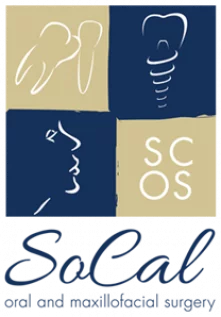TMJ in Tustin, CA
Temporomandibular joint dysfunction, or TMD, is a group of conditions that cause pain in the jaw joint and surrounding muscles. The temporomandibular joint (TMJ) connects the lower jaw to the skull and moves the jaw up and down and side to side. This joint is one of the most complex joints in the body and has a wide range of motion. When working correctly, the TMJ allows a person to open and close their mouth, chew, speak, swallow, and more. However, when the joint becomes misaligned or damaged, it can cause pain and make these activities difficult.
Treatment for TMD depends on the severity of your symptoms. For mild cases, over-the-counter pain relievers, anti-inflammatory medications, or physical therapy to strengthen the muscles around the jaw joint may be recommended. Oral appliances may also be recommended. In more severe cases, surgery may be necessary to repair the damaged joint.
If you are experiencing any of the symptoms of TMD, it is essential to see our oral surgeon Tustin, CA at SoCal Oral and Maxillofacial Surgery as soon as possible. Left untreated, TMD can lead to more severe health problems.
Symptoms of TMD
- Pain in the jaw joint
- Jaw popping or clicking when opening or closing the mouth
- Locking of the jaw joint
- Limited range of motion in the jaw
- Facial swelling
- Headaches
- Neck pain
- Earaches
- Dizziness
- Ringing in the ears
- Hearing loss
- Difficulty chewing
- Teeth grinding


Treatment Options for TMD
Lifestyle Modifications
Lifestyle changes can often have a significant impact on TMD symptoms. Stress management techniques like meditation, yoga, and counseling can help reduce teeth grinding and muscle tension contributing to TMJ pain. Additionally, adjusting your diet to avoid hard and chewy foods can lessen the strain on your jaw. Maintaining proper posture also plays a role in alleviating TMD symptoms.
Physical Therapy
A physical therapist specializing in TMD treatment can teach you exercises to strengthen and stretch your jaw muscles. They can also provide techniques for relaxing these muscles, significantly reducing pain and discomfort.
Oral Appliances
Custom-fitted splints or mouthguards, provided by our oral surgeon in Tustin, CA, can help prevent teeth grinding and offer relief from TMJ pain. These devices work by properly aligning the jaw and reducing pressure on the joint.
Botox Injections
Botox injections are becoming an increasingly popular TMD treatment in Tustin, CA. They work by relaxing the jaw muscles and reducing pain associated with TMD. Trained healthcare providers administer Botox injections, which can significantly relieve pain and discomfort in some patients.
Surgery
Surgical intervention is usually considered a last resort when conservative treatments fail. Surgical procedures may involve repairing or replacing the TMJ joint, depending on the extent of the damage.
Early intervention and consultation with healthcare professionals are crucial steps toward finding the right treatment plan for your TMJ needs. With proper care and management, you can regain control of your life and minimize the impact of TMD on your daily activities. For the best care, visit SoCal Oral and Maxillofacial Surgery at 13522 Newport Avenue, Suite 109, Tustin, CA 92780, or call (714) 730-6767.

Location
13522 Newport Avenue, Suite 109,
Tustin, CA 92780
Office Hours
MON8:00 am - 5:00 pm
TUE8:00 am - 5:00 pm
WED8:00 am - 3:00 pm
THU8:00 am - 5:00 pm
FRI7:00 am - 3:00 pm
SATClosed
SUNClosed
SoCal Oral and Maxillofacial Surgery
Location
13522 Newport Avenue, Suite 109,
Tustin, CA, 92780
Phone: (714) 730-6767Text Us: (714) 730-6767
